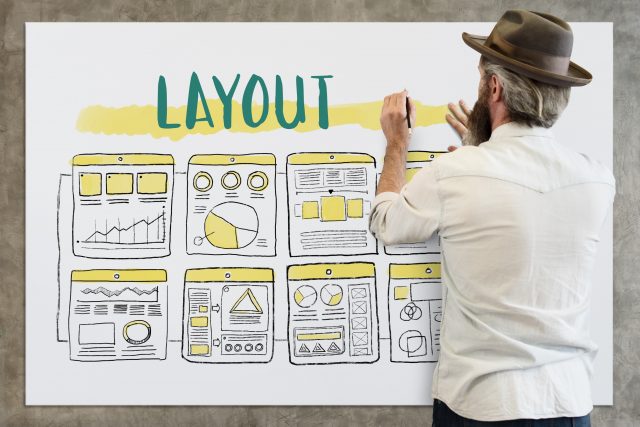In the ever-evolving realm of user experience (UX) design, one factor has emerged as a powerful driver of success: emotion. The marriage of technology and emotion has given rise to a transformative approach known as Emotional UX Design. As technology becomes increasingly integrated into our daily lives, creating memorable, emotionally resonant user experiences is paramount. In the United States, a hotbed of technological innovation, this approach has gained prominence, shaping the way designers craft digital interactions. This blog explores the fascinating landscape of Emotional UX Design in the USA, delving into its definition, significance, techniques, and real-world applications. Join us on a journey that uncovers how this marriage of technology and emotion is revolutionizing the digital world, one empathetic interaction at a time.
What is Emotional UX Design?
Emotional User Experience (UX) Design is a specialized facet of UX design that focuses on creating digital interfaces and interactions that evoke emotional responses from users. It goes beyond mere functionality and usability; instead, it strives to forge a meaningful connection between the user and the product.
At its core, emotional UX design recognizes that users engage with technology on a deeply personal and emotional level. It aims to harness this emotional engagement to enhance the overall user experience. This approach acknowledges that our interactions with digital products and services often evoke emotions such as joy, frustration, trust, or excitement. Therefore, emotional UX design seeks to intentionally evoke positive emotions and minimize negative ones, ultimately leaving users with a lasting, positive impression of the product or service.
The Importance of Emotional UX Design
Emotional User Experience (UX) Design is not just a buzzword; it’s a strategic approach that has gained immense significance in the digital realm, particularly in the USA. Understanding the importance of emotional UX design requires recognizing its profound impact on user engagement, loyalty, and overall success in the competitive tech landscape.
User Engagement:
Emotional UX design is a powerful tool for capturing and retaining user attention. When users feel emotionally connected to an app or website, they are more likely to spend more time exploring its features, interacting with its content, and returning for future visits. This engagement translates into higher user satisfaction and potentially increased conversion rates for businesses.Brand Loyalty:
In a market saturated with choices, users often turn to emotional connections to make decisions. Products or services that evoke positive emotions like trust, delight, or empathy through their design tend to create loyal user bases. Brand loyalty, in turn, leads to repeat business, referrals, and positive online reviews, which are invaluable in the age of social media and online communities.Enhanced User Experience:
Emotional UX design enhances the overall user experience. When users have enjoyable, emotionally resonant interactions with a digital product, they are more likely to forgive minor usability issues or learning curves. This means that even in the face of occasional glitches, users may continue to engage with and champion the product due to their positive emotional experiences.Differentiation in a Crowded Market:
Emotional UX design can be a key differentiator in a crowded marketplace. While many products and services may offer similar features, those that stand out by offering memorable, emotionally driven experiences are more likely to gain a competitive edge and capture a significant market share.User Well-being:
Emotional UX design can also play a role in supporting user well-being. Apps and platforms that are designed with empathy and mindfulness of users’ emotional states can provide valuable support and comfort in various contexts, from mental health apps to educational platforms.
In essence, the importance of emotional UX design extends beyond aesthetics or surface-level engagement. It has the potential to redefine how users interact with technology, fostering meaningful connections and delivering experiences that leave a lasting impact. As such, it has become an integral aspect of modern digital design, especially in the USA where user-centric design and innovation continue to drive the tech industry forward.
How to Design for Emotion

Creating designs that resonate emotionally with users involves a thoughtful and comprehensive approach. Here’s a deeper dive into the key considerations for crafting emotionally engaging user experiences:
User Empathy:
User empathy forms the foundation of emotional design. It’s about not only understanding users’ needs but also feeling what they feel. Delve deep into your users’ lives, their motivations, and their pain points. Through empathy, you can design experiences that genuinely connect with their emotions and make your product or service indispensable in their lives.User Personas:
Building detailed user personas is instrumental in emotional UX design. These fictional representations of your ideal users should include not just demographic data but also their behavioral patterns, motivations, and emotional triggers. Personas guide design decisions, ensuring that the emotional aspect of user experiences is given the attention it deserves.Storytelling:
Storytelling transcends mere functionality and engages users on an emotional level. It’s about creating a narrative within your design that resonates with users. Whether it’s the journey of your product, the story of your brand, or the user’s personal journey while using your product, storytelling captivates and connects users with a deeper emotional thread.Consistent Branding:
Branding consistency is crucial for emotional UX design. Every aspect of your design, from color palettes to typography to imagery, should align with your brand’s emotional identity. This ensures that users consistently experience and connect with your brand’s emotional tone across various touchpoints.Microinteractions:
These subtle, delightful design elements often go unnoticed but have a profound impact on emotional engagement. Microinteractions include animated buttons, playful hover effects, or even interactive feedback sounds. They add a layer of delight and personality to your design, making users feel more connected and emotionally satisfied with their interactions.Feedback and Responsiveness:
Providing feedback that acknowledges user actions fosters emotional positivity. When users receive immediate, clear, and positive responses, they feel more valued and satisfied. Conversely, helpful error messages can turn moments of frustration into opportunities for empathy and assistance.Testing and Feedback Loops:
Emotional design is nuanced, and user feedback is invaluable in refining emotional aspects. Regular user testing allows you to observe emotional reactions, identify pain points, and gather insights into how users perceive and connect with your design emotionally. These insights drive iterative improvements that lead to more emotionally resonant experiences.Ethical Considerations:
Ethical emotional design is essential. Avoid exploiting emotions in manipulative ways. Transparency and user consent should be prioritized when incorporating emotional elements into your design. Respecting users’ emotional boundaries and maintaining trust is crucial.
In the USA’s design landscape, known for innovation and user-centricity, these nuanced emotional design strategies can set your product or service apart. Emotional resonance fosters loyalty, satisfaction, and a deeper connection between users and your brand, making it a vital component of modern UX design.
The Role of Empathy in UX Design:
Empathy forms the bedrock of successful user experience (UX) design, particularly when crafting emotionally resonant digital interfaces in the USA. Empathy is far more than a buzzword; it’s an essential attribute that underpins the entire UX design process. At its core, empathy in design is about developing a deep understanding of users’ needs, emotions, and experiences. It enables designers to step into the user’s shoes, to see the world through their eyes, and to feel what they feel. This empathetic perspective allows designers to create digital experiences that genuinely connect with users on an emotional level.
Empathetic designers in the USA prioritize users’ well-being above all else. They recognize that technology should serve humans and not the other way around. This human-centric approach drives designers to champion user needs, advocating for designs that prioritize user satisfaction and emotional engagement. By actively listening to user feedback and considering their emotional responses, designers ensure that their work resonates effectively with the intended audience.
In the USA, where user-centric design practices thrive, empathy is not just a guiding principle; it’s a transformative force. Designers who infuse empathy into every stage of the design process create digital experiences that resonate deeply with users’ emotions. These experiences forge more profound connections between users and the products they interact with, leading to lasting satisfaction and loyalty. Empathy isn’t just a skill for designers; it’s the key to designing digital interfaces that truly touch the hearts of users.
Examples of Emotional UX Design in the USA:
In 2023, emotional UX design in the USA has reached new heights, with numerous examples showcasing its impact on user experiences. Here are some notable instances:
Apple’s iOS Redesign:
Apple, known for its dedication to user-centered design, introduced a revamped iOS interface in 2023. The redesign incorporated softer color palettes, smoother animations, and interactive micro-interactions that evoke a sense of delight. These subtle yet emotionally resonant changes enhance the overall user experience, making Apple’s devices even more appealing to users.Spotify’s Mood-Based Playlists:
Spotify, the music streaming giant, leverages emotional UX design through personalized playlists. By analyzing users’ listening habits and preferences, Spotify curates playlists that match their emotional states. Whether a user is feeling energetic, relaxed, or melancholic, Spotify’s playlists adapt, creating a more emotionally engaging music discovery experience.Tesla’s AI-Driven Assistant:
Tesla’s vehicles now feature an AI-driven assistant with an emotionally intelligent touch. The assistant can detect a driver’s mood through voice and facial recognition and adjust the in-car environment accordingly. For example, if the driver appears stressed, the assistant can suggest calming music or even initiate a guided breathing exercise, creating a safer and more emotionally supportive driving experience.Netflix’s Emotionally Adaptive Content:
Netflix, the streaming service behemoth, has embraced emotional UX design by tailoring content recommendations to users’ emotional states. By analyzing viewing history and subtle cues like the time of day, Netflix suggests movies and shows that align with users’ current emotions, ensuring a more emotionally satisfying and personalized entertainment experience.Amazon’s Inclusive Design Initiatives:
Amazon has taken steps to make its platform more emotionally inclusive. The company introduced features like adaptive interfaces for users with cognitive disabilities, showing a commitment to empathetic design. These efforts not only enhance user experiences but also promote emotional well-being by ensuring that a diverse user base can access and enjoy Amazon’s services.
These examples illustrate how emotional UX design has become a driving force behind user-centric experiences in the USA in 2023. By understanding and responding to users’ emotions, companies can forge deeper connections with their audiences, ultimately leading to increased satisfaction, loyalty, and brand advocacy.
The Future of Emotional UX Design
The future of emotional UX design promises exciting developments as technology continues to evolve and user expectations become more refined. With the advent of artificial intelligence (AI) and machine learning, personalized emotional experiences will become more prevalent. AI-driven algorithms will analyze user behaviors and preferences to tailor interfaces and interactions to individual emotional states. For example, a voice-activated assistant could recognize a user’s stress level and respond with soothing tones or helpful suggestions, creating a truly empathetic interaction.
Another dimension of the future of emotional UX design lies in augmented and virtual reality (AR/VR) technologies. These immersive platforms have the potential to amplify emotional experiences by creating highly immersive and emotionally resonant environments. For instance, AR/VR could be used in therapy to create virtual spaces that help individuals confront and manage their emotions. In gaming, emotional UX design in AR/VR can take storytelling to new heights, making players feel deeply connected to the characters and narratives. As technology evolves, the fusion of emotional design with AI, AR/VR, and other emerging technologies will continue to shape the future of user experiences, making them more engaging, empathetic, and emotionally enriching.
Conclusion: Creating Memorable User Experiences
In conclusion, emotional UX design is a powerful approach in the USA’s design landscape. It transforms digital interactions into memorable, emotional journeys that users cherish. By focusing on emotions, designers can forge deep connections between users and products, fostering brand loyalty and elevating the overall user experience. As technology evolves, emotional UX design will continue to shape the way we interact with digital interfaces, ensuring that our experiences are not just functional but emotionally resonant.
Read more:


















